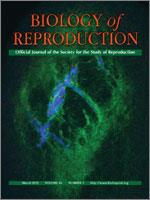The signaling molecule DHH, secreted by Sertoli cells, has essential regulatory functions in testicular differentiation. DHH is required for the differentiation of peritubular myoid cells that line the seminiferous cords and steroidogenic Leydig cells. The testicular cords in Dhh-null male mice lack a basal lamina and develop abnormally. To date, the DHH-signaling pathway has never been examined outside of any eutherian mammals. This study examined the effects of inhibition of DHH signaling in a marsupial mammal, the tammar wallaby, by culturing gonads in vitro in the presence of the hedgehog-signaling inhibitors cyclopamine and forskolin. Disruption of hedgehog signaling in the tammar testes caused highly disorganized cord formation. SOX9 protein remained strongly expressed in Sertoli cells, laminin distribution was highly fragmented, and germ cells were distributed around the cortical regions of treated testes in an ovarianlike morphology. This suggests that hedgehog signaling regulates cord formation in the tammar wallaby testis as it does in eutherian mammals. These data demonstrate that the hedgehog pathway has been highly conserved in mammals for at least 160 million years.
How to translate text using browser tools
30 November 2011
Seminiferous Cord Formation Is Regulated by Hedgehog Signaling in the Marsupial
Jin Wei Chung,
Andrew J. Pask,
Marilyn B. Renfree
ACCESS THE FULL ARTICLE

Biology of Reproduction
Vol. 86 • No. 3
March 2012
Vol. 86 • No. 3
March 2012




